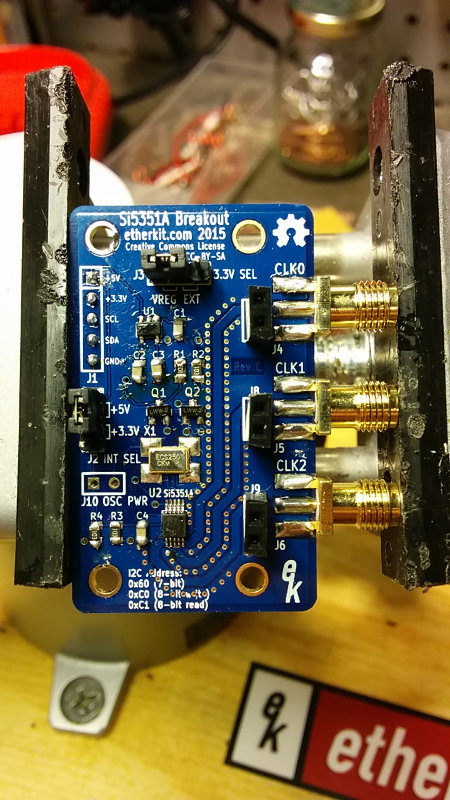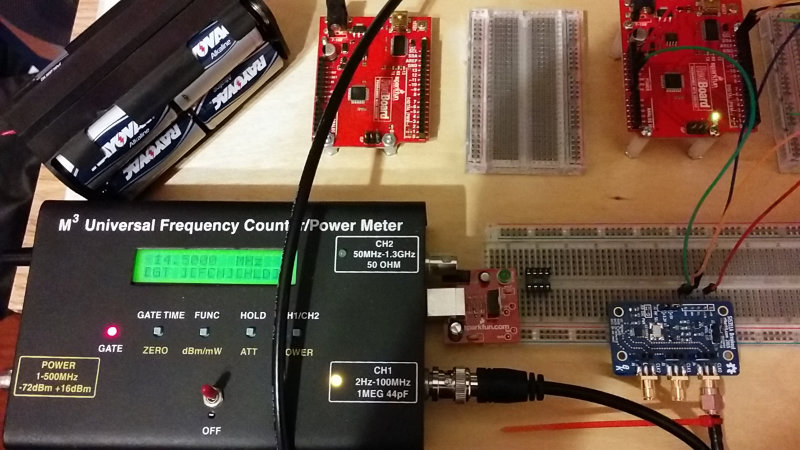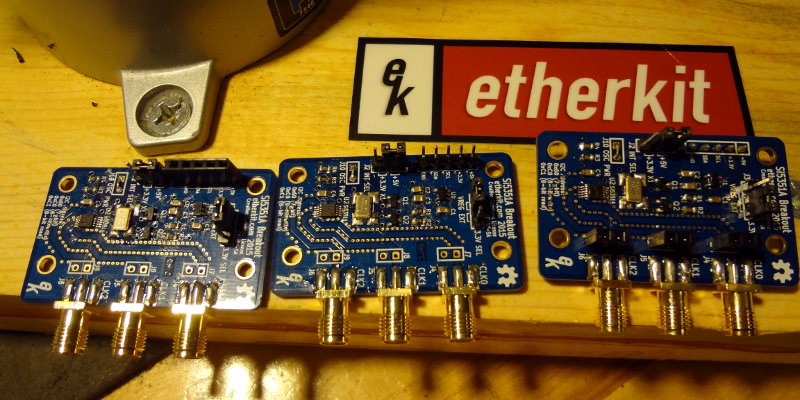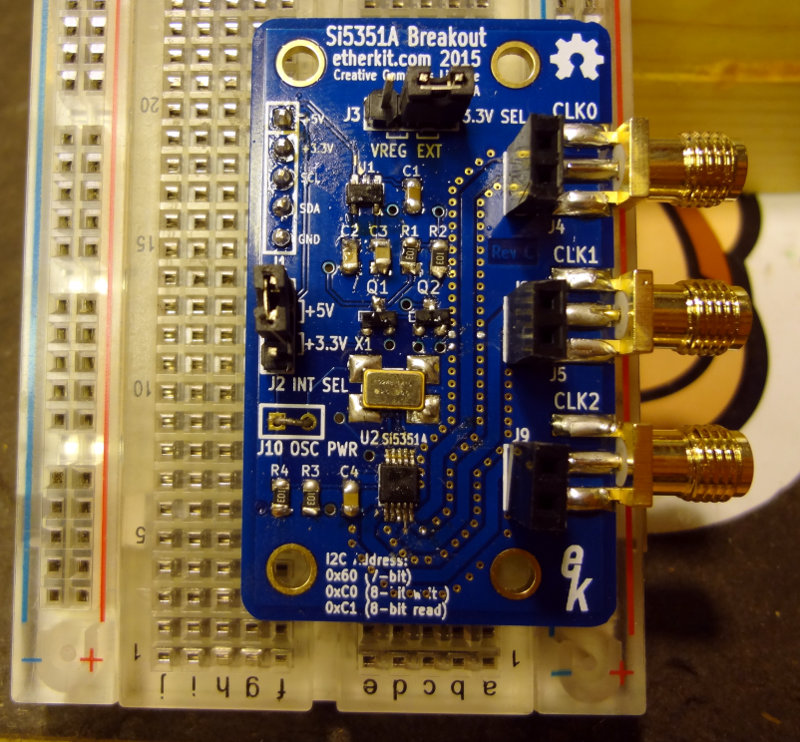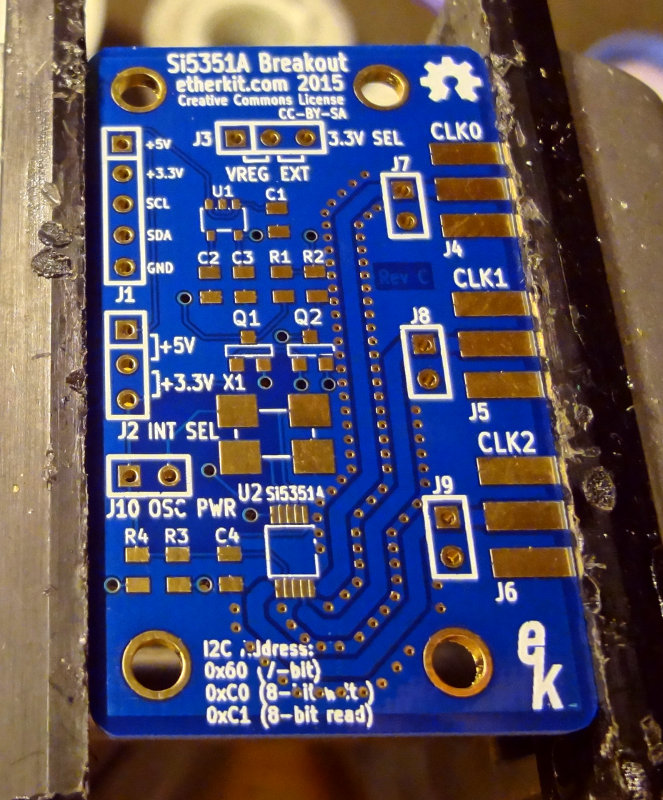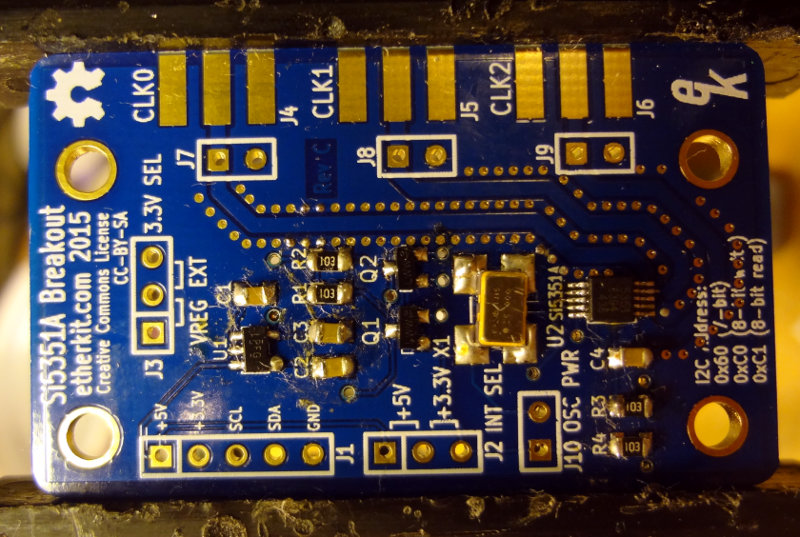After cobbling together a power cord to use with the Astron power supply, I was able to verify the power section on the RXTX board. Was getting just under 13V in and measuring 5V where there was supposed to be 5V.
Then I started on the USB power section. This is a section that’s isolated from the rest of the board and has the first of the SMT components to solder on in the project: a 3.3V voltage regulator (LP2992) and some capacitors.
Got everything soldered on easily enough, but when it came time to test, I wasn’t getting anything on the output of the voltage regulator. There was the 5V USB voltage going into the voltage regulator, but nothing coming out.
Rats.
Not sure if the voltage regulator got cooked in the soldering process, zapped by static, or if something happened to it while it was sitting on the shelf.
Guess I’ll have to order another one. Fortunately they’re not terribly expensive ($1.09 each for 10 from Mouser.com).
Here’s the top and bottom of the board so far.

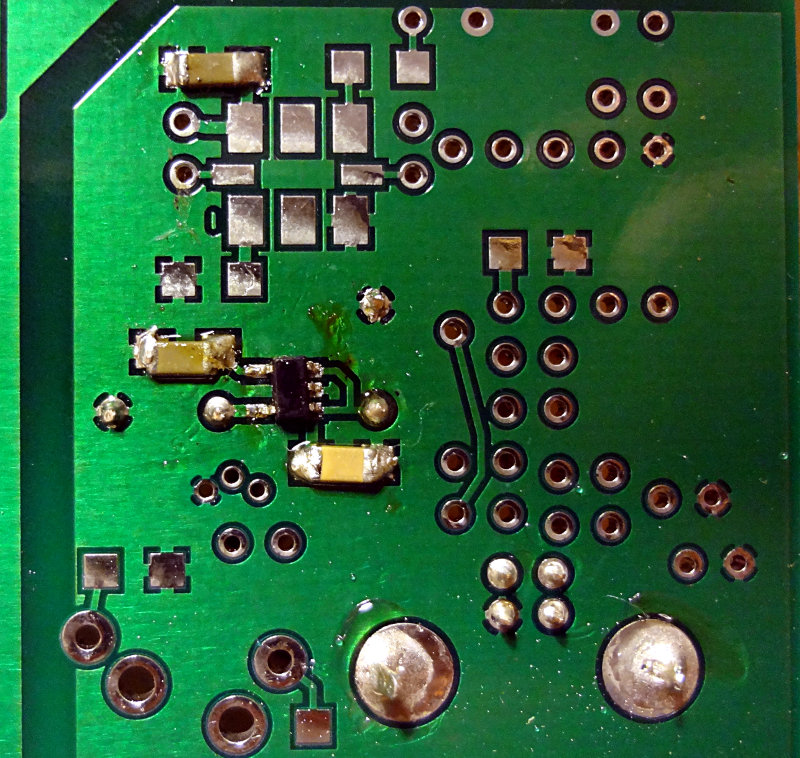
Next section is the local oscillator. I may not be able to test it with a bum voltage regulator, but I think I’ll press on anyway.

